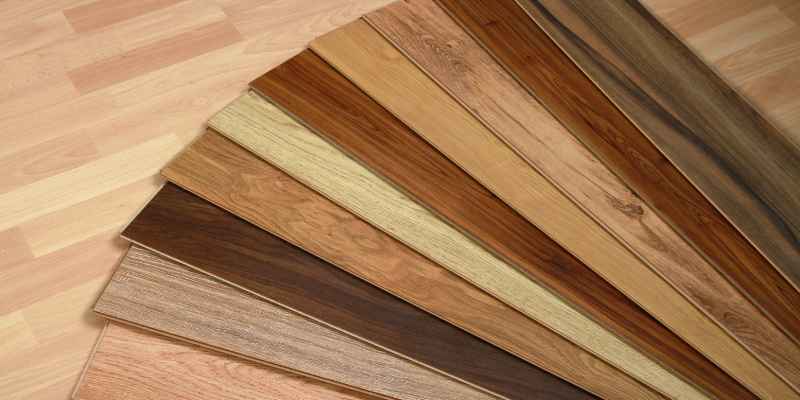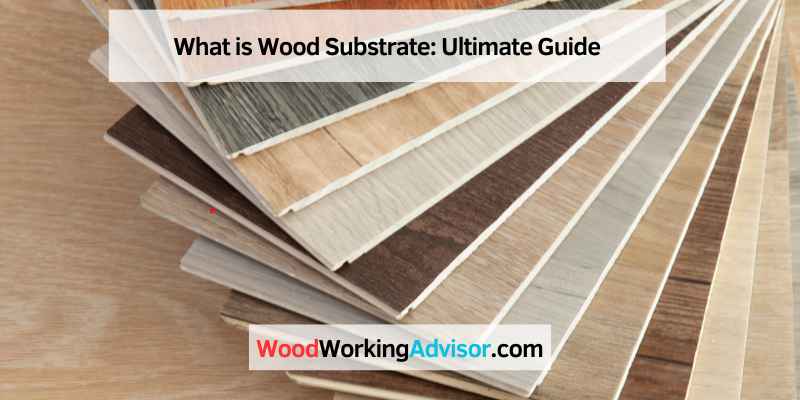Wood substrate is a product made of solid wood, particleboard, plywood, or MDF. It is a durable material that can be used as a base panel in furniture and other projects.
One of the advantages of using wood substrate is its ability to hold screws firmly and withstand heavier loads. It is commonly used in veneering projects and provides a smooth surface for bonding veneers. Wood substrate is versatile and can be made from various types of wood, including bamboo and rattan.
It is a reliable and cost-effective option for creating strong and stable structures in furniture manufacturing.
Types Of Wood Substrates
Solid Wood
Solid wood is a natural and durable option for wood substrates. It is commonly used in furniture making, cabinetry, and other woodworking applications. The beauty of the natural wood grain adds a timeless charm to any project.
Particleboard
Particleboard, also known as chipboard, is a cost-effective wood substrate made from wood particles bonded together with resin. It is often used as a core material for furniture and cabinet construction.
Plywood
Plywood is a versatile wood substrate made by layering thin sheets of wood veneer together with the grain direction alternating to improve strength. It is widely used in construction, furniture, and millwork due to its strength and stability.
Medium Density Fiberboard (mdf)
MDF is an engineered wood substrate made by breaking down hardwood or softwood residuals into wood fibers and combining them with wax and resin. It is a popular choice for cabinet doors, furniture, and shelving due to its smooth surface and machinability.
Choosing The Right Wood Substrate
When it comes to working with wood, choosing the right substrate is essential for the success of your project. A wood substrate is an underlying layer or base panel made of materials like solid wood, particleboard, plywood, or MDF. Each substrate has its own set of advantages and disadvantages, and considering the right one for your project is crucial. In this article, we will explore some considerations for different projects and discuss the advantages and disadvantages of different substrates.
Considerations For Different Projects
When choosing a wood substrate, it’s important to consider the specific requirements of your project. Different projects have different needs, and selecting the right substrate will ensure the best outcome. Here are a few considerations to keep in mind:
- Strength and Durability: If your project requires a strong and durable substrate, plywood is an excellent choice. Its laminated layers provide stability and resistance to warping, making it ideal for furniture construction and other load-bearing applications.
- Flexibility: When working on curved or irregular surfaces, bendable plywood may be the best option. It allows for easy shaping and bending without compromising strength.
- Smooth Finish: If achieving a smooth and uniform finish is important for your project, medium density fiberboard (MDF) is a popular choice. MDF offers a flat and consistent surface, making it ideal for cabinetry and decorative applications.
Advantages And Disadvantages Of Different Substrates
Each wood substrate has its own advantages and disadvantages, which should be taken into account when making a choice. Here’s a brief overview:
| Substrate | Advantages | Disadvantages |
|---|---|---|
| Plywood | High strength and durability, resistance to warping | Can be more expensive, visible layers in the edge grain |
| MDF | Smooth and consistent surface, great for painting | Not as strong as plywood, can swell or warp when exposed to moisture |
| Particleboard | Cost-effective, widely available | Less resistant to moisture, lower strength compared to plywood |
It’s important to weigh these advantages and disadvantages against the specific requirements of your project to make an informed decision.
Applications Of Wood Substrates
Wood substrates find a diverse range of applications in various industries due to their versatility and durability. From furniture manufacturing to construction and engineering, wood substrates play a crucial role in creating high-quality products.
Furniture Manufacturing
- Wood substrates are commonly used as a base material for crafting furniture pieces.
- They provide a sturdy foundation for creating durable and aesthetically pleasing furniture.
Wood Veneering
- Veneer substrates, such as plywood, MDF, or solid wood, are essential for wood veneering.
- These substrates serve as the underlying layer to which veneers are bonded, enhancing the appearance of furniture and decorative items.
Construction And Engineering
- Wood substrates are used in construction for creating wall panels, cabinets, and other structural elements.
- Engineers rely on wood substrates like plywood and particle board for their workability and strength in various projects.
Difference Between Wood Substrate And Veneer
A wood substrate serves as the underlying layer for materials like wood, metal, or plastic, whereas veneer is a thin layer bonded to the substrate.
Definition Of Wood Substrate
A wood substrate is a base panel of various materials, including solid wood, plywood, MDF, or composite products like rattan or bamboo. Sometimes veneers are bonded directly without a substrate, as seen in plywood production.
Understanding Veneer As A Bonded Surface
Veneer is a thin layer of wood attached to a substrate for decorative or functional purposes. With the right preparation and adhesive, veneer can be applied to a wide range of smooth surfaces.
Sustainability And Environmental Impact

In today’s environmentally conscious world, it is essential to consider the sustainability and environmental impact of the materials we use. When it comes to wood substrate, these factors play a significant role in determining its viability as a choice for various applications. Let’s explore the impact of wood substrate on forestry and tree harvesting as well as eco-friendly alternatives.
Impact On Forestry And Tree Harvesting
The use of wood substrate raises concerns about the impact it has on forestry and tree harvesting. It’s crucial to ensure that the wood used for substrate production comes from sustainable sources. Sustainable forestry practices, such as selective harvesting and replanting, help preserve the balance of ecosystems and maintain the health of our forests.
Additionally, responsible tree harvesting involves proper tree management techniques that minimize damage to surrounding vegetation and wildlife habitats. By adhering to these practices, we can mitigate the negative impact that wood substrate production may have on the environment.
Eco-friendly Substrate Alternatives
For those seeking more eco-friendly alternatives to wood substrate, several options are available. These alternatives consider the environmental impact while still maintaining the functionality and aesthetic appeal needed for various applications.
One alternative is the use of recycled wood or reclaimed timber. This involves repurposing wood from old furniture, buildings, or other products, giving it a new life as a substrate while reducing the demand for new wood production. Another option is the use of engineered wood products such as bamboo or cork. These materials offer durability and sustainability, making them attractive choices for eco-conscious individuals.
Furthermore, exploring non-wood substrates such as recycled plastic or composite materials can provide viable alternatives with minimal environmental impact. These materials are often made from recycled materials, reducing waste and minimizing the use of natural resources.
In conclusion, considering the sustainability and environmental impact of wood substrate is crucial in making responsible choices. By opting for sustainably sourced wood, practicing responsible forestry, and exploring eco-friendly alternatives, we can contribute to a greener and more sustainable future.
Best Practices For Working With Wood Substrates
Wood substrates are commonly used in carpentry and woodworking projects. For optimal results, there are some best practices to consider when working with wood substrates, including preparation, adhesive selection, handling, and finishing. It’s essential to adhere to these best practices to ensure a successful woodworking project and enhance the durability and aesthetic appeal of the finished product.
Preparation And Adhesive Selection
Before working with wood substrates, thorough preparation is crucial. This includes ensuring the substrate is clean, smooth, and free from any imperfections that could affect the bonding process. Proper surface preparation promotes strong adhesive bonding and prevents issues such as delamination.
When selecting adhesives for wood substrates, it’s important to choose products specifically designed for woodworking applications. Consider factors such as the type of wood substrate being used, the environmental conditions the finished product will be exposed to, and the specific requirements of the project.
Tips For Handling And Finishing
When handling wood substrates, it’s essential to use proper lifting and support techniques to prevent damage to the material. Additionally, applying even pressure during assembly and allowing adequate drying time for adhesives are crucial for maintaining the integrity of the wood substrate.
Finishing techniques play a significant role in enhancing the appearance and protection of wood substrates. Proper sanding, staining, and sealing are essential for achieving a professional finish and prolonging the lifespan of the wood substrate.
Future Trends In Wood Substrates
Wood substrate, a key element in various industries, is typically composed of solid wood, particleboard, plywood, or MDF. These substrates provide a stable base for veneers, contributing to the durability and aesthetics of furniture and other wood-based products. Choose the right wood substrate for superior quality and longevity.
Innovations In Substrate Materials
With continuous advancements in the field of wood substrates, there has been an emergence of innovative materials that are revolutionizing the industry. These new substrates are not only sustainable but also offer improved performance, durability, and cost-efficiency. Manufacturers are now exploring alternative wood-based substrates, such as bamboo and rattan, which provide a more environmentally friendly option while maintaining structural integrity.
Advancements In Substrate Technology
Technological advancements have significantly impacted the wood substrate industry. New techniques in substrate production, such as enhanced bonding processes and composite products, have led to substrates with superior strength and resistance to environmental factors. Moreover, the integration of advanced coatings and treatments has extended the lifespan of wood substrates, making them more suitable for diverse applications.
Innovations in Substrate Materials
1. Sustainable alternatives such as bamboo and rattan.
2. Improved performance, durability, and cost-efficiency.
Advancements in Substrate Technology
1. Enhanced bonding processes.
2. Composite products for superior strength.
3. Integration of advanced coatings and treatments.
Frequently Asked Questions Of What Is Wood Substrate
Is Plywood A Wood Substrate?
Plywood is considered a wood substrate, along with other materials like solid wood, particleboard, and MDF. Veneers can be bonded to each other without using a substrate, but plywood is made by bonding veneers together. Plywood is a durable substrate that can support heavier loads and securely hold screws.
What Is A Timber Substrate?
A timber substrate is an underlying layer of wood or engineered wood used in construction or manufacturing. Common materials include plywood, particle board, and MDF. It provides a base for other materials and is often chosen for its durability and cost-effectiveness.
What Is The Best Wood Substrate?
The best wood substrate is Medium Density Fiberboard (MDF), known for workability, dimensional stability, and lack of grain-telegraphing. It’s widely used for wood veneer due to its close tolerances and flatness.
What Is A Substrate In Furniture?
A wood substrate is the material a veneer is bonded to, such as solid wood or engineered products like plywood or MDF.
Conclusion
When it comes to choosing the right wood substrate for your project, options like solid wood, plywood, particleboard, and MDF stand out. These substrates offer durability, workability, and dimensional stability, making them ideal for various applications. Plywood, in particular, is widely accepted for its ability to hold screws firmly and carry heavier loads.
Whether you’re veneering furniture or constructing wood panels, understanding the different wood substrate options will help you make an informed choice. Consider the specific needs of your project and select the best wood substrate accordingly.


